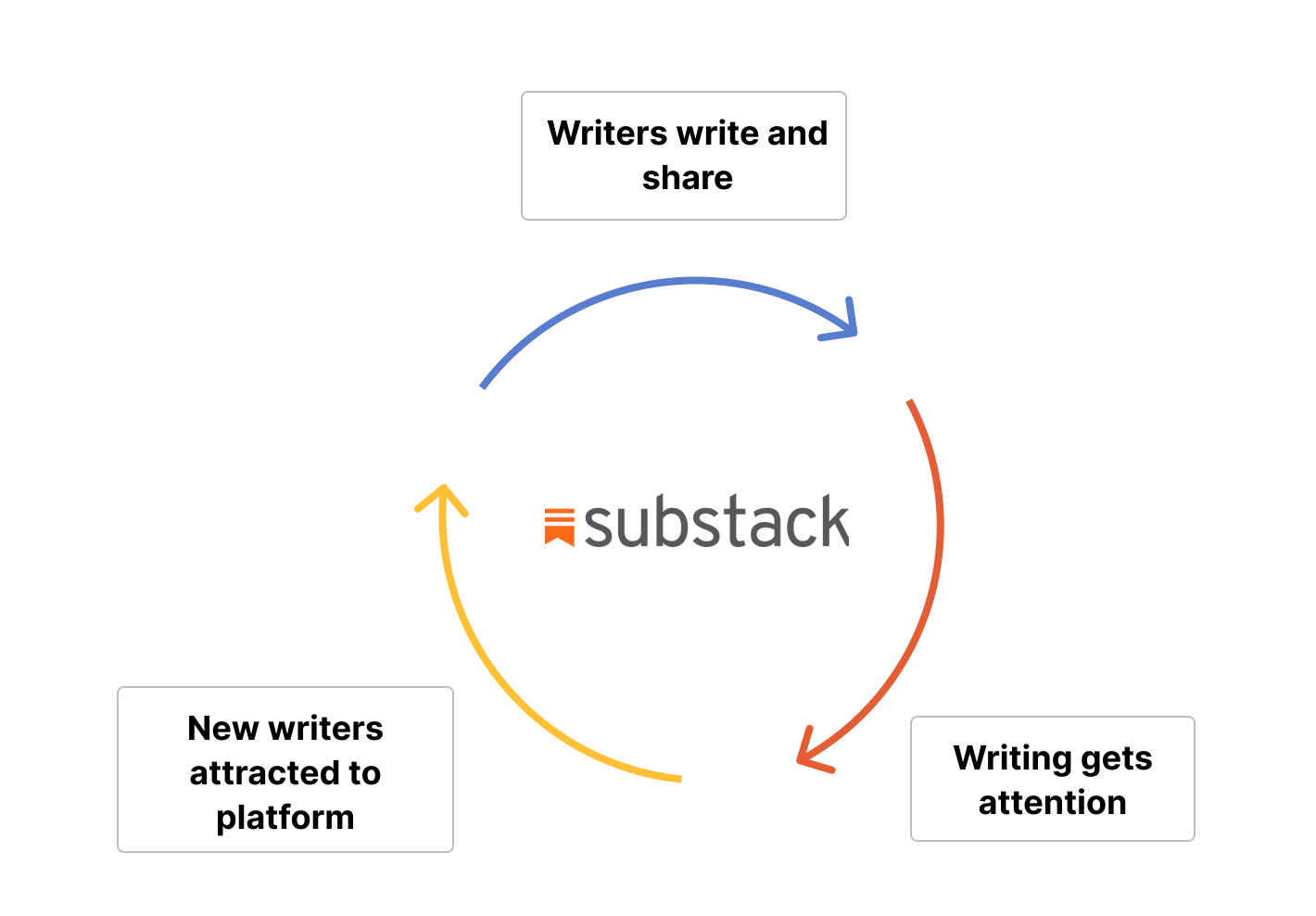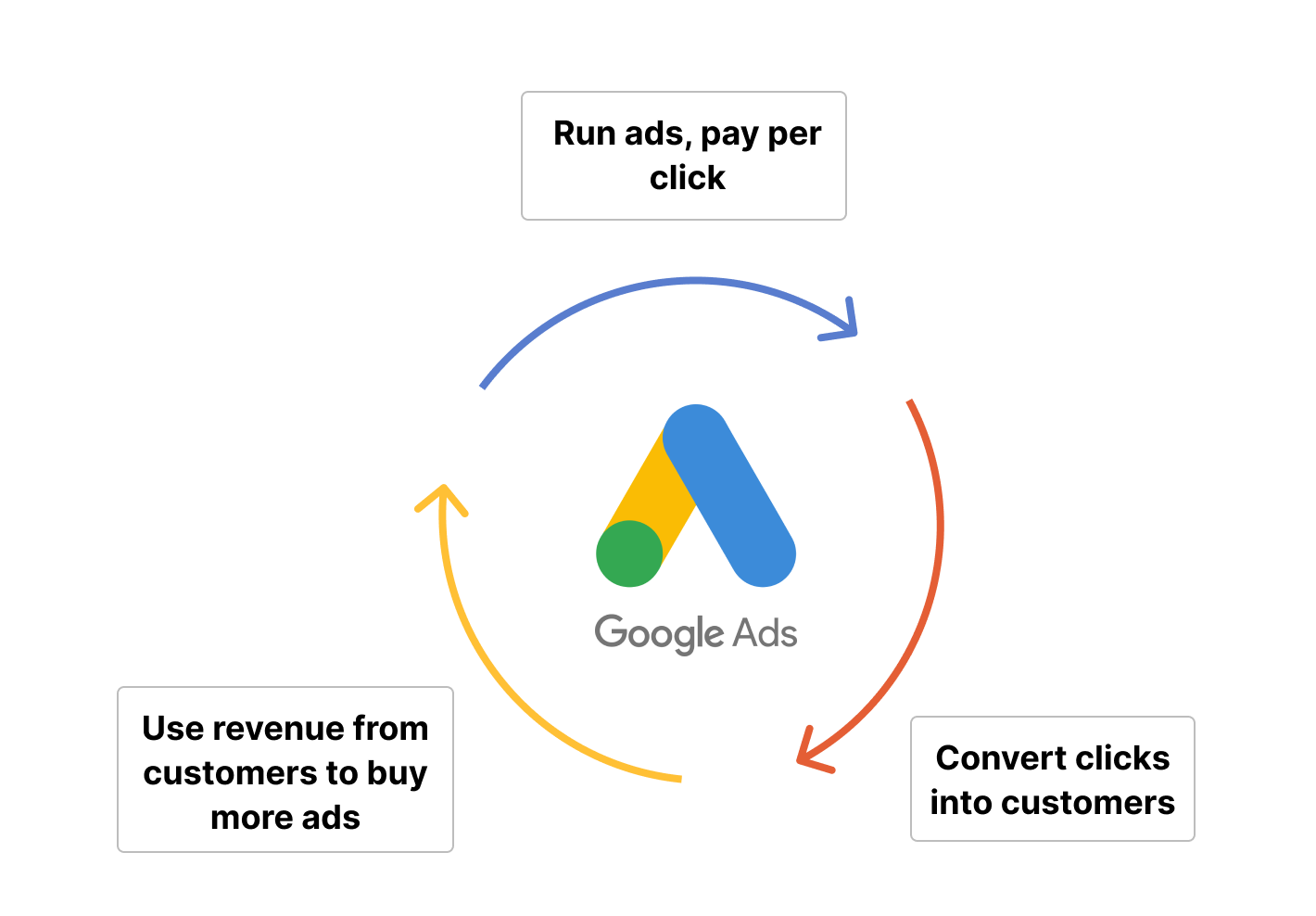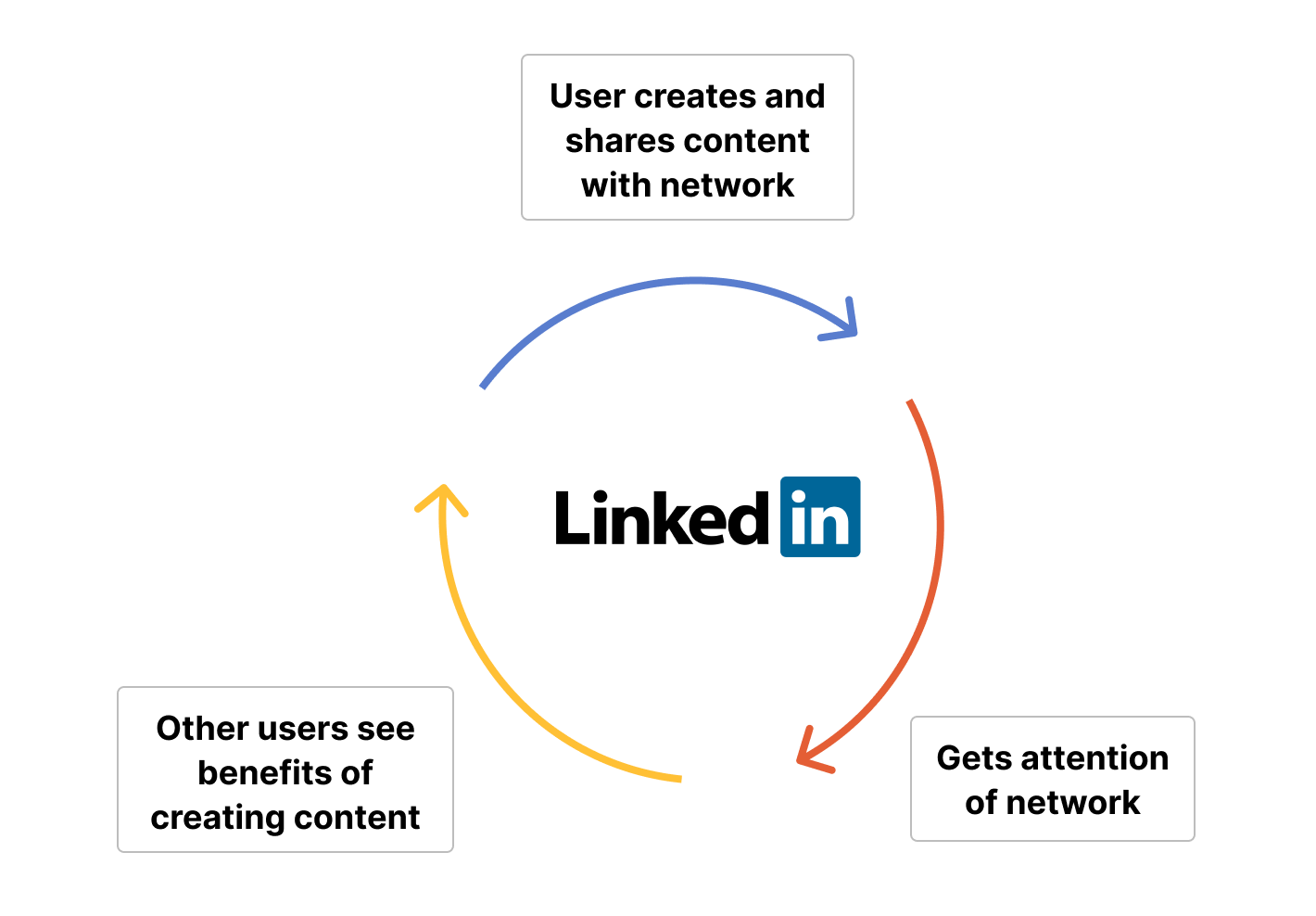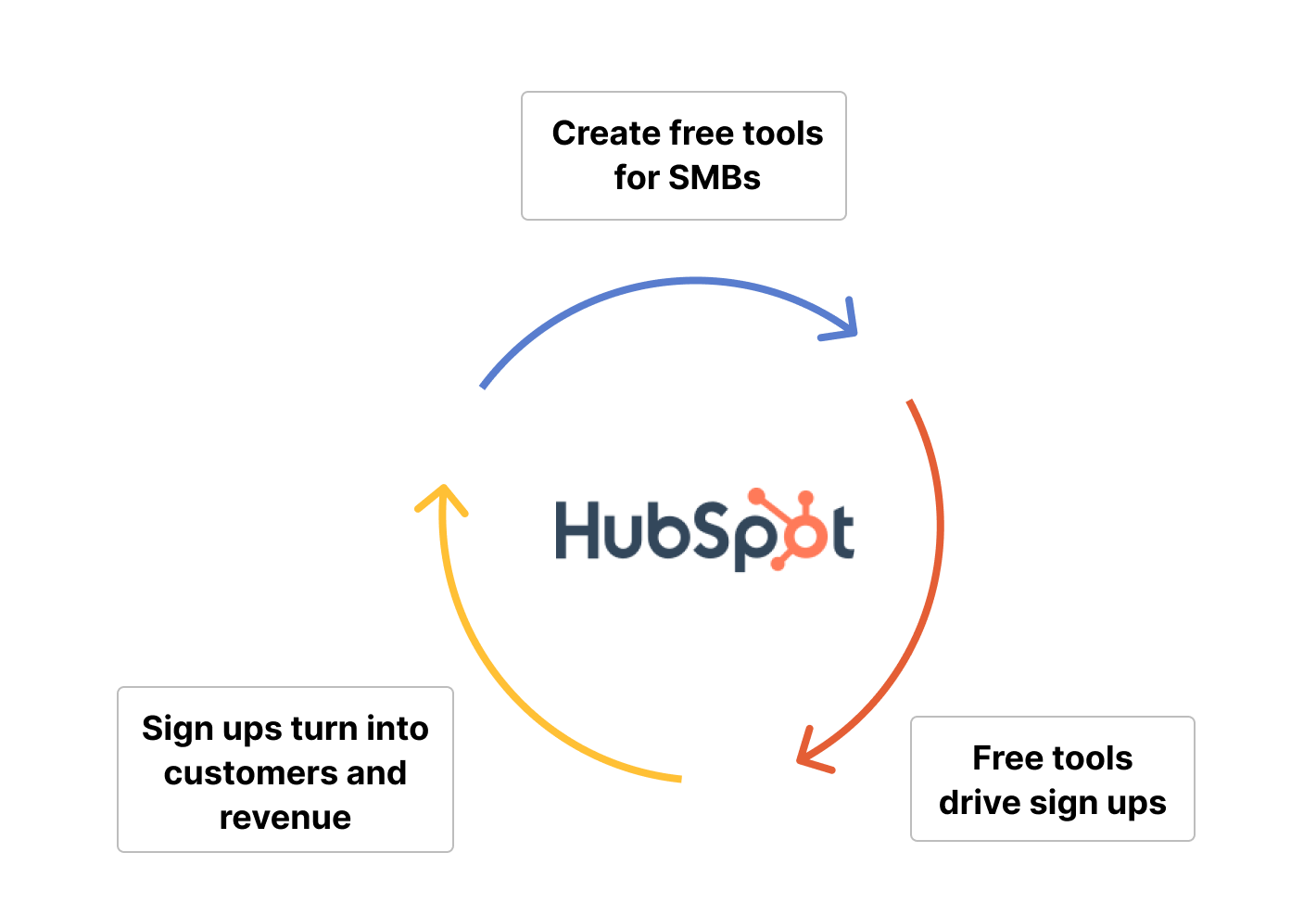A growth loop is a series of actions that amplify each other to fuel perpetual growth. New inputs repeatedly power the series to exponentially grow the whole. Companies use growth loops to align their product and distribution to have the greatest impact.
Growth loops are an alternative growth framework to funnels like AARRR pirate metrics. While funnels focus on a series of steps from Acquisition to Referral, growth loops focus on a smaller number of steps done repeatedly.
In this guide, we'll cover:
- Why growth loops are so powerful
- The different types of growth loops
- How to choose your own growth loop
- How to measure your growth loop
Growth loops are important because they compound. Ideally, the growth in your key metrics exponentially increases, while the average effort or investment decreases. For many companies, this key metric is users or revenue which helps create a successful company.
Nearly every successful company utilizes growth loops in some way, consciously or not. For example, the newsletter platform Substack allows writers to easily share and monetize their work. As writers share their work (for their own benefit), it gets the attention of other writers, who see the benefit of the platform, join, and continue the loop.

Growth loops can be a useful way of aligning multiple areas. For a growth loop to work, customer-facing teams must align with engineering and product teams. Each team benefits from the work the others are doing.
In our Substack example, the marketing and business development teams have to attract popular writers (who often require upfront payments). The product and engineering teams then have to deliver a great writing and subscription experience. Without both, the growth loop doesn't work. When the company is aligned, however, it can cause exponential growth through compounding benefits. For Substack, that means bigger writers, better experiences, more readers, and ultimately, more revenue.
There are multiple types of growth loops. Each involves specific actions and is relevant to specific companies. In this section, we’ll define each of them and provide examples. After this, we’ll cover how to choose a growth loop.
Virality is all about growth through word of mouth. Users gain value from other users being a part of the product or by sharing the product. Products succeed when they gain large amounts of attention.
This is generally good for two types of products:
Multiplayer or networked products that improve (or only work) when multiple friends or colleagues also use it (e.g. Snapchat, Figma, Zoom). Users want friends or colleagues to use the product.
Products that are fun to share with others (e.g. TikTok, Instagram, Airbnb listings). Users share the app or content from the app on social media and other communications platforms.
The performance marketing growth loop is using advertising or marketing to acquire users, then using the new revenue to fund more marketing. It is reliant on connecting marketing to acquire users (performance) with value (revenue) captured. If you see a social media or search ad for a product, that is a product relying on performance marketing.
For example, with Google Ad Words, companies pay per click on specific keywords related to potential customers’ searches. They pay for clicks (performance). With the correct math figured out (cost of acquisition), this can lead to a growth loop of increasing ad spend and revenue growth.

Products that use performance marketing growth loops generally have high margins (more money for ads), but low organic demand. Good examples include direct-to-consumer goods (e.g. Casper, Warby Parker, Dollar Shave Club) and SaaS software targeting small-medium businesses (e.g. Shopify, Hubspot, Slack).
Content is the growth loop of users creating content that other users find which attracts them to become users (and create content). It is also the ability to generate data used to attract users who then create more data.
Two types of products benefit from this:
- Users discover your product through content other users create and share (e.g. StackOverflow, Reddit, Substack). This is also known as user-generated content.
- Your product generates a large amount of data, which you use to make content (e.g. TripAdvisor, Zillow, Expedia). These companies rely heavily on SEO.
Sales is the growth loop of acquiring users through sales. Customers grow (both revenue and usage), which allows the company to hire more salespeople as well as improve the product’s value proposition.
Products relying on sales generally pitch for large contracts that need high levels of support, engagement, and customization. Offers are often tailored to the specific customer and require a large amount of time and effort.
For example, sales is a growth loop for enterprise SaaS companies (e.g. Salesforce, SAP, Microsoft) and big consultancies (e.g. McKinsey, Deloitte)
After reading these, you likely have some idea of what growth loop is right for your product and company. Two key questions to understand this further:
- Who are your ideal users?
- What benefits do those users get as part of your growth loop?
Understanding your ideal user will help you decide where to put your effort for your growth loop. If your ideal user won’t pay for your product, it isn’t a good idea to use sales as your growth loop. You can create a growth loop that better aligns with what they want. Growth loops are about creating win-wins.
For example, say you are LinkedIn. Your ideal user is a newly graduated business professional. They have less income, so they are less likely to pay for a subscription. Sales and performance marketing are less likely to work.
What you can do is create a connection between their network and content creation. They value their network a lot, and creating content is free. When a user creates and shares content, their network pays attention. With this attention, the user engages with their network, and LinkedIn sells ads. When other users see the benefits of this, they share content, and this cycle repeats. This is a content growth loop.

A user needs a win-win to repeatedly take an action that fuels a product’s growth loop. They won't take an action they don't think they'll benefit from. They need an incentive, whether it is status, attention, or money. Smart companies build this incentive into the core of their product.
For example, HubSpot builds a large number of free tools small-medium businesses benefit from, like "Website Grader" or "Email Signature Generator" as well as the free tier of their product. These freebies get a lot of attention which drives signups, some of which turn into customers. The growth in customers allows them to improve their overall product (including their free tools) and create a B2B viral growth loop.

There are many creative ways to provide users incentives to be a part of your growth loop. Optimizing existing win-wins with users, as well as finding new ones, fuels the growth loops that help products succeed.
To understand your growth loop and the value it is providing, it is important to measure your chosen growth loop. There are several ways to do this; they usually involve measuring the input (action) in connection to the output (key metric). What these inputs and outputs depend on the product and the growth loop.
Here are some examples of how you can measure each of the growth loops.
To measure virality, we want to know what drives users to share our product and the referral source of signups. To do this, we’ll want to measure our traffic and shareability. We want events for the loop of signing up, getting started, referring others, and repeating. More occurrences of each and better connections between them are good signs for our viral growth loop.
Performance marketing is about measuring marketing is leading to signups and revenue. We can do this by understanding customer cost of acquisition (CAC) and lifetime value (LTV). The margin between what it takes to acquire a user (CAC) and how much value we receive from them (LTV) drives the performance marketing growth loop (and the rest of the company).
To get data about CAC and LTV, we’ll have to understand the sources of our traffic, conversion, and finally retention. This combined with our marketing spend and revenue enables us to calculate CAC and LTV (and grow our business and product).
Calculating CAC and LTV: CAC is sales and marketing spend divided by acquired customers. For example, $100 spent on Facebook ads led to 10 new customers, which would mean their CAC is $10. LTV is customer value times customer lifetime. For example, the average customer has a $20 per month subscription and stays subscribed for 5 months. The average customer LTV would be $100.
The key to content growth loops is knowing what is created and shared. To do this, we must understand what drives someone to create and share a piece of content. If we have a data-driven content creation strategy, we want to understand how data can lead to conversion and what are the best ways to generate more data.
Both types want traffic, conversion, and usage events. Content growth loops are similar to viral ones in this way.
Sales has many of its own special metrics unrelated to product and marketing. This doesn’t mean measurement isn’t helpful. Trial usage, lead conversion, usage after conversion, and group metrics can help sales teams do a better job.
If the sale involves implementation or customization, usage metrics are useful for optimizing this. Anything that creates a better offering (like building a better product) help the sales process.
No matter what growth loop you choose, and however you choose to measure it, PostHog can help. PostHog provides the tools like event tracking, trends, funnels, and experiments that help companies create better growth loops and more successful products.
If you are looking for more information on measuring viral or content growth loops, check out our blog post on how we use PostHog for marketing.

